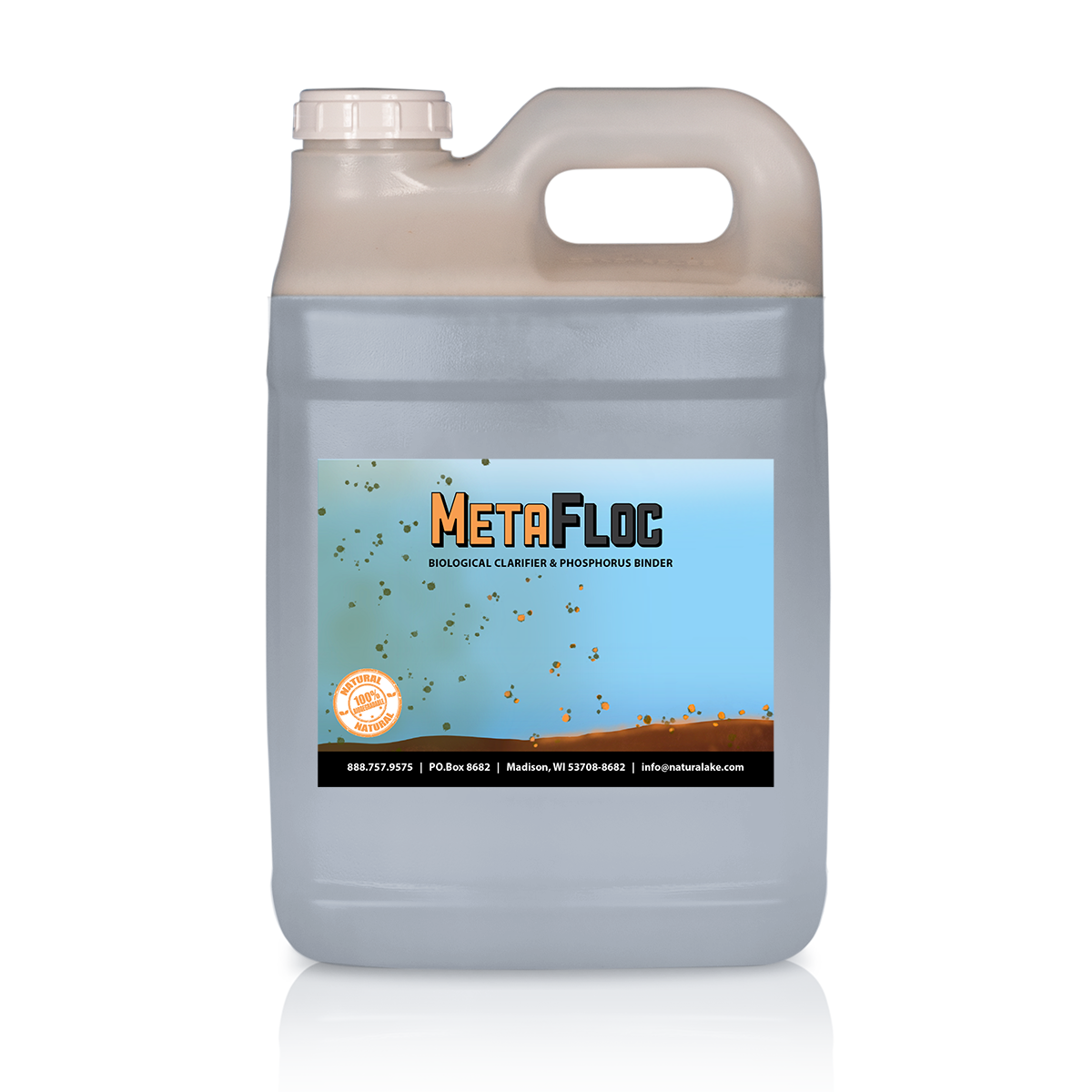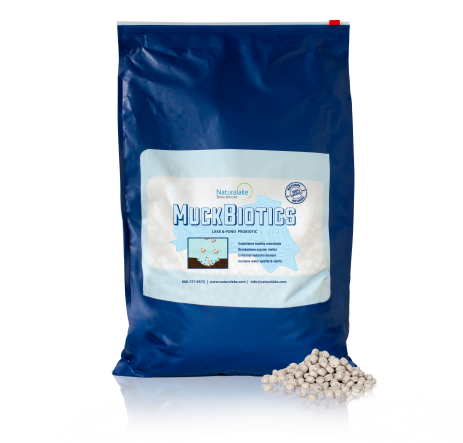Aphanizomenon: The Bloom You Don’t Want to See
Understanding the toxic cyanobacteria threatening our lakes—and how to fight back.
By

As you take a walk along your favorite lake on a warm summer day and you might see an eerie green sheen across the water. Sometimes it looks like spilled paint, other times like pea soup. It’s easy to assume it’s just pond scum—but what you’re seeing could be a dangerous cyanobacterium, and one of the usual suspects is Aphanizomenon.
Though its name sounds like something from a sci-fi movie, Aphanizomenon is very real, and increasingly problematic in freshwater ecosystems. Let’s dive into what makes this cyanobacterium so troublesome, and what we can do about it.

Ecology and Habitat: Where and Why Aphanizomenon Blooms Occur
Aphanizomenon is a genus of filamentous cyanobacteria—often referred to as “blue-green algae,” though it’s technically bacteria, not algae. Found in freshwater bodies across the globe, it tends to dominate in nutrient-rich (eutrophic) lakes and ponds, especially during the warmer months (Wacklin et al., 2009).
What gives Aphanizomenon its competitive edge? For one, it can fix atmospheric nitrogen. That means even when other types of phytoplankton struggle due to low nitrogen levels, Aphanizomenon can thrive by pulling nitrogen gas directly from the atmosphere and converting it into a usable form (Paerl & Otten, 2013). Add high phosphorus levels—often the result of runoff from agriculture or lawn fertilizers—and you’ve got a recipe for a bloom.
It prefers:
- Warm temperatures (20–30°C / 68–86°F)
- High phosphorus concentrations
- Calm, stable water columns (little mixing)
- Long daylight hours
- Low nitrogen-to-phosphorus (N:P) ratios
These conditions often occur in midsummer, making July through September prime bloom season in many temperate lakes (Dokulil & Teubner, 2000).
Aphanizomenon and Toxins: A Dangerous Brew
Not all strains of Aphanizomenon produce toxins, but some can produce several harmful compounds, including:
- Anatoxin-a: A fast-acting neurotoxin
- Saxitoxins: Also neurotoxic, and known from marine paralytic shellfish poisoning
- Cylindrospermopsin: A hepatotoxin (damages the liver)
Anatoxin-a is perhaps the most concerning due to its speed of action. It interferes with nerve signal transmission, which can lead to muscle paralysis and respiratory failure (Carmichael, 2001; Merel et al., 2013).

Fatal Encounters: When Blooms Turn Deadly
Unfortunately, blooms of Aphanizomenon have been linked to numerous animal deaths and even some human health concerns. Dogs are often the first victims—because they drink from, swim in, or lick scum off their fur after exposure to contaminated water.
Documented Cases:
- Minnesota, USA (2021): Several dogs died within hours of swimming in a lake with a dense Aphanizomenon bloom. Toxin analysis confirmed anatoxin-a concentrations exceeding 1,000 µg/L—well above the WHO’s guideline of 1 µg/L for drinking water (Minnesota Pollution Control Agency [MPCA], 2021).
- Germany (2000s): Waterfowl die-offs linked to saxitoxin-producing Aphanizomenon flos-aquae blooms in shallow lakes (Ballot et al., 2008).
- California, USA (2010): A dog died after ingesting water from a lake where Aphanizomenon was present; anatoxin-a was detected at concentrations >500 µg/L (Backer et al., 2013).
Humans typically don’t ingest bloom water in the same way animals do, but recreational exposure (swimming, boating) can cause rashes, eye irritation, gastrointestinal symptoms, or respiratory distress—especially in sensitive individuals (Stewart et al., 2006).
Management Strategies: What Can Be Done?
Controlling Aphanizomenon blooms isn’t easy. Once conditions are right, the cyanobacteria can multiply quickly and dominate a water body. While there are a variety of algicides that can be used to help reduce the risk or severity of blooms, nutrient management is key and is the only way to provide long-lasting results. One of the most promising new products is MetaFloc, which naturally removes nitrogen and phosphorus from the water column and binds phosphorus in the sediment, making it unavailable for cyanobacteria. A 9-acre lake in Montana effectively solved its Aphanizomenon blooms with a single MetaFloc treatment dosed for the sediments. Within three days after treatment, total phosphorus levels were cut below the critical bloom threshold level of 30 ug/L P from 270 ug/L P. Cell counts went from > 100,000 cells/ml to < 8,000 cells/ml. Clarity also improved from 2ft. to 6.5ft. For over a year now, the lake has maintained conditions and has only needed monthly MuckBiotics and Nature’s Blend to keep up with external nutrient loading. No more algicides have been needed.

A Final Word
Aphanizomenon may be ancient—cyanobacteria have been around for billions of years—but its role in modern waterbodies is a growing concern. As climate change lengthens warm seasons and nutrient pollution continues unchecked, blooms are becoming more frequent, more intense, and more dangerous.
The good news? Awareness is growing, too. With smart monitoring, better land use practices, and targeted lake management, we can reduce the frequency and impact of Aphanizomenon blooms. So the next time you see a greenish tinge on your favorite lake, you’ll know what to watch for—and why it matters.
References
Backer, L. C., Manassaram-Baptiste, D., LePrell, R., & Bolton, B. (2013). Cyanobacteria and algae blooms: Review of health and environmental data from the Harmful Algal Bloom-related Illness Surveillance System (HABISS) 2007–2011. Toxins, 7(4), 1048–1064. https://doi.org/10.3390/toxins7041048
Ballot, A., Fastner, J., Wiedner, C., et al. (2008). Paralytic shellfish poisoning toxin-producing cyanobacterium Aphanizomenon gracile in Northeast Germany. Applied and Environmental Microbiology, 74(12), 4044–4050. https://doi.org/10.1128/AEM.00773-08
Carmichael, W. W. (2001). Health effects of toxin-producing cyanobacteria: “The CyanoHABs.” Human and Ecological Risk Assessment, 7(5), 1393–1407. https://doi.org/10.1080/20018091095087
Dokulil, M. T., & Teubner, K. (2000). Cyanobacterial dominance in lakes. Hydrobiologia, 438, 1–12. https://doi.org/10.1023/A:1004155810302
Merel, S., Walker, D., Chicana, R., Snyder, S., Baurès, E., & Thomas, O. (2013). State of knowledge and concerns on cyanobacterial blooms and cyanotoxins. Environment International, 59, 303–327. https://doi.org/10.1016/j.envint.2013.06.013
Minnesota Pollution Control Agency (MPCA). (2021). Toxic algae and pet deaths in Minnesota lakes. https://www.pca.state.mn.us
Paerl, H. W., & Otten, T. G. (2013). Harmful cyanobacterial blooms: Causes, consequences, and controls. Microbial Ecology, 65(4), 995–1010. https://doi.org/10.1007/s00248-012-0159-y
Stewart, I., Webb, P. M., Schluter, P. J., & Shaw, G. R. (2006). Recreational and occupational field exposure to freshwater cyanobacteria – A review of anecdotal and case reports, epidemiologic studies and the challenges for epidemiologic assessment. Environmental Health, 5(1), 6. https://doi.org/10.1186/1476-069X-5-6
Wacklin, P., Hoffmann, L., & Komárek, J. (2009). Nomenclatural validation of the genetically revised cyanobacterial genus Aphanizomenon. Fottea, 9(1), 59–64. https://doi.org/10.5507/fot.2009.005
Tip of the day:
Cyanobacteria counts > 20,000 cells/ml pose direct health concerns.
Related Products & Services
MetaFloc

MuckBiotics

Nature’s Blend


About the Author
Patrick Goodwin, M.S., CLM, serves as a Water Resource Specialist at Natural Lake Biosciences, bringing over a decade of expertise in water resource management. He specializes in collecting data to assess nutrient loading and its impacts on algal blooms and water clarity. With a proven track record of restoring numerous water bodies, Patrick is recognized as an authority in implementing oxygenation and circulation techniques.
Stay Up to Date With The Latest News & Updates
Subscribe Below for Natural Lake Biosciences Updates and Event Invitations!

0 Comments